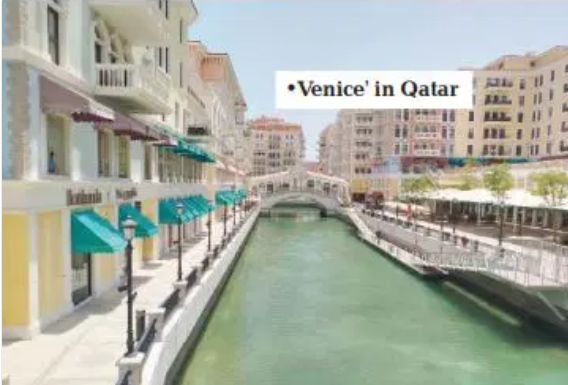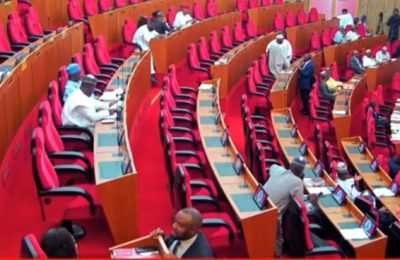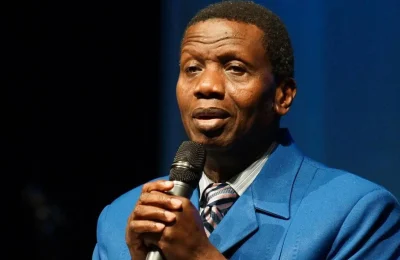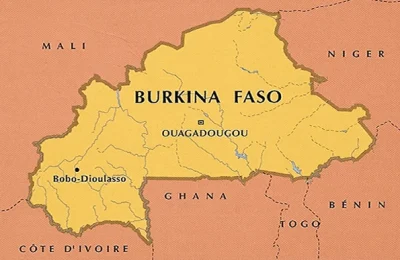
By Onochie Anibeze
With just 11,581 square kilometres of land and a population approaching three million, Qatar punches far above its weight. Before the 2022 FIFA World Cup, the population stood at around 2.65 million, but the global spectacle drew in thousands of workers, professionals, and dreamers. Yet, only about 300,000 of these are Qatari citizens—the rest are foreigners, or as Qatar prefers to call them, experts, who help drive the country’s remarkable growth.
Despite its size, Qatar is among the richest nations on Earth. Its oil and gas sector alone pulls in an estimated $100 billion annually. But wealth, here, is more than just numbers—it’s how they use it that sets Qatar apart. The country isn’t just oil-rich; it’s richly strategic, proudly cultural, and future-focused.
When Qatar won the bid to host the 2022 FIFA World Cup, it stirred a storm. Europe and America raised eyebrows. The criticisms came thick and fast—human rights concerns, the heat, workers’ welfare. Each point was amplified in global media. But Qatar didn’t flinch.
They listened. They adapted. They responded with cutting-edge stadium cooling technology, capable of bringing summer temperatures inside the stadiums down to 15°C—even when the desert heat hit 55°C outside. They built world-class infrastructure, expanded their rail system, constructed new hotels, and invested heavily in hospitality and tourism. They raised the bar and showed the world how to build a tournament from the sand up—literally.
Yet, there was more agitation. Demands for cultural shifts, including LGBTQ+ rights, clashed with Qatar’s deep-rooted Islamic values. At this point, the tiny Gulf nation drew a line. They had given the world every world-class facility it asked for, but they weren’t going to compromise their identity. “No way,” would be the response— “Haba!”, a Nigerian would yell.
Qatar stood its ground, did the necessary, and ignored the noise. The result? Arguably the best FIFA World Cup ever. A tournament so spectacular that even its fiercest critics quietly applauded. The stadiums, the culture, the technology—it all came together like a perfectly rehearsed orchestra.
So impressive was the event that when the U.S. President visited the Gulf recently, Qatar proudly made references to its World Cup success. And guess what? The U.S. plans to take a page from Qatar’s playbook as they prepare for the next tournament on American soil. Amazing, isn’t it?
When President Trump visited Qatar during his tenure, he left with business deals worth billions. The U.S. agreed to supply Qatar with up to 160 aircraft valued at over $200 billion. Qatar also committed $10 billion toward improving the U.S. military base on its soil. A partnership of giants.
So how does such a small nation become this powerful?
Ahmed Hashem, our guide during the Trump visit, offered insight while showing us around Doha. “There are many good things about Qatar,” he said. “And a few things some may tag as negative—even if they’re not.” One of those unique aspects is citizenship: no matter how long you live in Qatar, or even if you marry a Qatari woman, you might never be granted citizenship. Your children, maybe. But not you.
Here, the average Qatari earns around $30,000 a month, whether they work or not. Yes, you read that right. That kind of financial security, combined with a tightly controlled population, ensures that national wealth is preserved and shared among a small group. This is why you see Ferraris and Lamborghinis as common as Toyotas on Qatari roads.
Qatar’s success is deliberate. They manage their resources wisely, protect their culture fiercely, and plan for the long term. They’ve created what many might call a utopia in the desert—and made it sustainable.
Beautiful World Cup sites still adorn Qatar. Lusail Stadium, where the 2022 final between Argentina and France took place—an engineering marvel partially built by foreign experts, including Nigeria’s engineer Eugene Okoson strikes any visitor passing by. What with the Pearl Island with its Venice-inspired canals, in its Zig Zag Towers, its National Museum, and even in the architectural storytelling of the Fermont and Raffles Hotels in Lusail—designed with the “Seal of Qatar,” twin arches symbolising victory.
Everywhere you look, Qatar whispers a reminder: wealth isn’t just what you have—it’s how you use it, preserve it, and let it reflect your values.
Sheikh Tamim bin Hamad Al Thani, the Emir of Qatar, earned rare praise from Trump: “You can have the best lands and resources, but without great leadership, you can’t achieve anything.” That statement couldn’t be truer in Qatar’s case.
And finally, no tour would be complete without a little humour. Our guide Hashem, brimming with wit, once teased, “We’ve arranged for everyone to receive a Ferrari.” Eyebrows rose. Then came the punchline: “You’ll receive it in parcels.” Laughter echoed. It reminded me of Super Eagles coach Clemens Westerhof’s old prank—when he promised each player a Mercedes in Holland, only to hand out toy cars instead. Stephen Keshi never stopped telling that story.
Like that story, Qatar leaves you with something unforgettable—humour, hospitality, ambition, and a touch of extravagance. In the end, Qatar’s story isn’t just about oil or sport. It’s about defying odds, staying true to one’s roots, and proving that greatness doesn’t require size—just vision.







